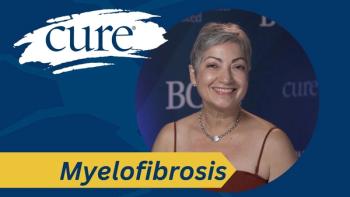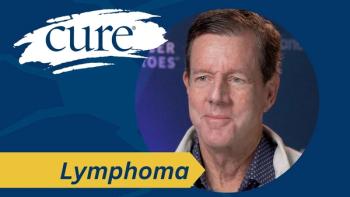
Becoming a Cancer Thriver Through the Healing Power of Art
Art is a creative outlet that provides health benefits to those affected by cancer. Art therapy is becoming more widely used in the field of medicine as its ability to help people is evidenced.
The flyer sat on my counter for a few days. It had come at a most inopportune time. Feeling physically unwell, I had no desire to read about upcoming art offerings, even if they were geared toward benefiting cancer survivors. I wasn’t interested even though free classes were being hosted by the local hospital. But instead of tossing the flyer, I kept it. For some strange reason, I just couldn’t throw it away.
Later in the week, as I was cleaning, I came across the flyer again. The logo for the hospital’s cancer program caught my eye. Cancer Thrivers — an appropriate name for post-cancer care, I’d thought to myself. Surely, I wanted to be a cancer thriver, didn’t I?
Turning the card over in my hands, I read about upcoming art classes. There was a little blurb about the power of art to help and heal, about how it could give people hope. The hospital was looking forward to helping those in active treatment or those who’d recently completed treatment and were in remission, the flyer stated. I fell into the latter category.
I’d
The cardboard flyer said art was therapeutic, that it could help heal body, mind, and spirit. I wondered if that was true.
After completing treatments for breast cancer, I’d found myself becoming more isolated. Suffering from post-cancer fatigue and limited mobility from lymphedema, it was often difficult to do things I’d once enjoyed. It felt like my mind was going numb and I could tell I was becoming depressed. It was time to do something about it. I wasn’t quite ready to join classes at the cancer treatment center, but I could do something at home.
I purchased some cheap craft paint, a canvas and some brushes. With no goal in mind, I began to spread some color on the canvas. Focusing on how the paint moved when varied pressure was applied, I found myself becoming lost in creating. More importantly, as I was painting, I no longer focused on the pain in my body. As I got into my groove, it was freeing.
Painting soon became a daily escape. As I worked, I learned to employ techniques I’d learned by watching YouTube videos. Eventually I found my niche in acrylic mediums. I didn’t know if I’d ever have my own unique style, but I knew I wanted to continue to learn and practice. There was something powerful about painting. It seemed my brain was being stimulated, but there was also something else occurring. I was connecting to a deeper state of consciousness. I was learning to be present in the moment.
One morning, a few weeks later, that little flyer caught my eye again. An acrylic painting class was being offered on the same afternoon I was scheduled for a blood draw. Mustering up bravery, I decided to pop in after the lab work was completed. After all, I would already be at the hospital and if I didn’t like being in a group of people, I could leave.
There were only three people in the class when I arrived. The instructor was cordial and energetic. Since this was a beginner class, she talked about color theory while introducing us to various types of paints, and tools. She then allowed us to paint freely. The fellowship was fun and lighthearted. Time passed quickly and before I knew it, the class was over.
That small, courageous step of attending the art class helped immensely. In time, my paintings improved. When I saw a notice for a juried art show, I took a risk and entered some pieces. Not wanting to experience rejection, I considered calling the administrator to say I’d changed my mind about entering the art. But I didn’t. In fact, I was pleasantly surprised when they called wanting to display even more of my work. At 61, even though I wasn’t a professionally trained artist, I had 30 pieces on display in a public arena.
Creating art has helped heal my soul and heart. The therapeutic power I feel after a few hours of creating is amazing. I have found, in my own personal life, art can heal both physical and mental pain.
Water, paint and brushes have helped me find a new passion in life. The power to create has given me a freedom my body doesn’t quite understand — and I’m not sure I understand it either.
It seems, through art, I’ve regained a tiny part of what breast cancer took from me — the part of me that loved life, enjoyed beauty and always hoped.
According to the
For those affected by cancer, art therapy can be an invaluable tool.
Art therapy programs are often funded by donations. If your hospital or treatment facility offers programs in art therapy, why not visit and enjoy a class or two? Don’t let feelings of inadequacy hold you back. Even a child can make art. And remember what they say: “Beauty is in the eye of the beholder.” Art is what you make it. You are the only one who has the power to create what is inside of your mind.
“Every human is an artist. And this is the main art that we have: the creation of our story.” -Don Miguel Ruiz




